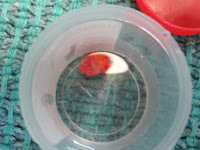The diabetic foot occurs due to decreased blood supply to lower limbs due to accelerated arterial hardening also called atherosclerosis, nerve damage which leads to decreased sensation in foot, tight fitting shoes etc. Since there is poor blood and nerve supply, even a small trauma or infection can cause a very serious damage which can lead to even amputation of limbs. Below is a video of diabetic foot in an uncontrolled diabetic patient.
Treatment includes antibiotics, daily dressing of the wound with vitE, trental ointments (which increase blood flow in lower limbs) can be used.
Surgical management includes debridement of the infected area and then dressing and antibiotics. If that doesnt help then amputation is the last resort.
